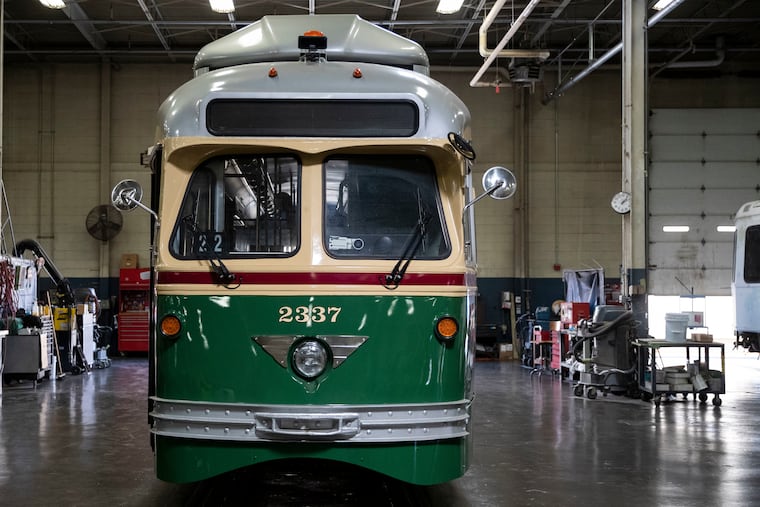Six of Philly’s antique trolleys will return to Girard Ave. next month after three years and $1.5 million in restoration
It's back to the future as 1940s trolley cars return to Philly streets next month. Twelve more to come.

It’s been rumored for about a year that Philadelphia’s antique trolley cars would come back sometime this fall, but now there is a date: Sept. 10.
That’s when several 1947 PCC cars, with their classic cream-and-green color scheme, are scheduled to start carrying passengers again on the Route 15 tracks that run for 8.2 miles along Girard Avenue, SEPTA officials say.
For the last three years, SEPTA crews have been working to rebuild 18 PCCs, rusted and damaged by rain, snow and road salt. Craftspeople are replacing the trolleys’ metal frames and fabricating the bodies in-house at the Woodland Shop in the Kingsessing neighborhood.
“When they come in, they are ready for the scrap heap and when they leave here they’re museum-quality almost,” Brian Aaron, SEPTA’s director of rail vehicle maintenance, said in a recent interview.
» READ MORE: Resurrecting transportation history in a SEPTA trolley overhaul shop
Six of the historic vehicles have been rehabbed at a cost of about $250,000 each, and SEPTA has been testing them along the route for the past several months. Excited trolley fans posted pictures all over social media nearly ever time one was spotted.
Work on the remaining trolley cars, in various stages of completion, will continue and buses will augment the six redone vehicles on the route until all the trolleys are back in service, SEPTA says.
For many in Philadelphia, the 76-year-old streetcars are like holy relics. They are a touchstone, a link to the city’s past – and when they disappeared in the early 1990s as financial problems forced SEPTA to close several trolley lines, the public clamored for more than a decade for their return.
Finally, in 2005, SEPTA put 18 of the historic cars back to work on Route 15 after restoration at a factory in southwest Pennsylvania. By 2020, they needed to be restored again, and SEPTA decided to do the work itself.
“To me, it’s like an ice cream truck,” SEPTA CEO Leslie S. Richards said in an interview last year. “You know, you hear that bell going and it brings back good memories. ... People just feel attached to the trolleys.”
But the renaissance is not going to last forever. SEPTA’s trolley-modernization plan calls for eventual replacement of the PCC cars by a fleet of new light-rail vehicles that will be fully accessible and operate between fixed stations. It’s not clear when that project might be completed.
Philadelphia has operated a trolley network long after most cities converted to buses in the decades after World War II, though its size did shrink.
Five trolley lines run through West Philadelphia and in Delaware County on street-level tracks and in a tunnel beneath Market Street in Center City, 40 miles in all.